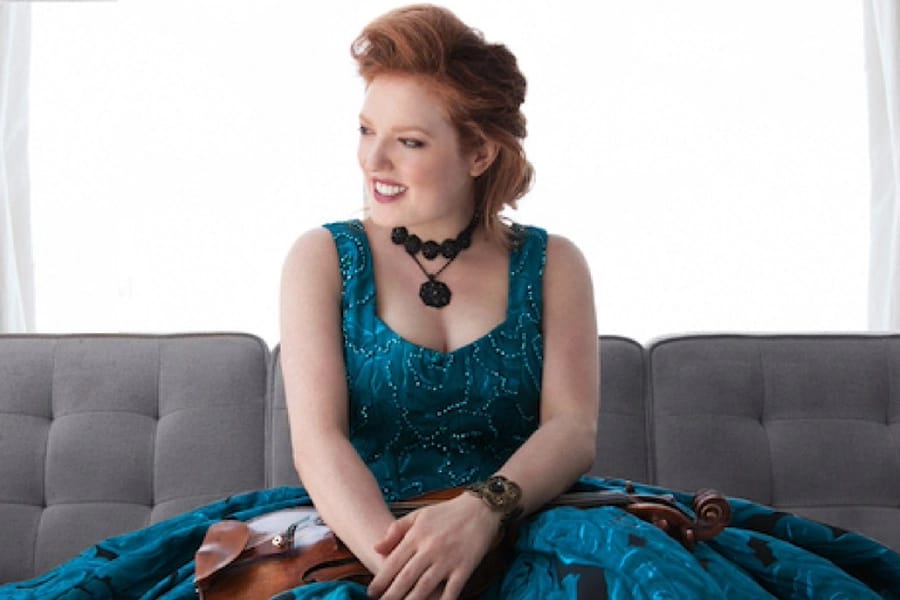
Violinist Rachel Barton Pine decided to pair two very different concertos by Edward Elgar and Max Bruch on her newest CD, despite their seeming differences. The Elgar is much longer, and develops more slowly, but they both require a certain lush type of playing. She began to study the Bruch before she was ten, performing it with the Chicago Symphony at 11. Listeners who receive KDFC’s eNotes Newsletter can download the slow movement of the Elgar for free this week.
You can sign up for eNotes in the Orange box at the top of the right column of this page.
The pairing of the concertos, Pine says, was inspired by the packaging of Yehudi Menuhin set of CDs. “I had a CD reissue of two of Menuhin’s earliest recordings, his classic interpretations of each work which had been put together on this CD reissue, and so that was the first… Hmmm, Elgar and Bruch… that kind of works!” They might not seem to belong together, but she says they do. “They both have a very heart-on-the-sleeve, lush kind of sound that brings both of them to life… When I practice each of them, I feel like I’m searching for a very similar kind of sound in both, that’s very personal. This sort of rich, warm, romantic sound.” Edward Elgar’s cello concerto is more accessible and better known, but Pine argues that this is the stronger piece. “Elgar certainly felt so, it was one of his favorites among his own works, and Fritz Kreisler, for whom it was written said that it was the next great violin concerto after Beethoven and Brahms.” It includes an accompanied cadenza, which features some of the strings “thrumming” in accompaniment, a brand new technique. “This was inspired by the windchimes in the summer home of Elgar’s family. So when you hear that moment, you’re like ‘whoa, this sounds kind of magical.’”







